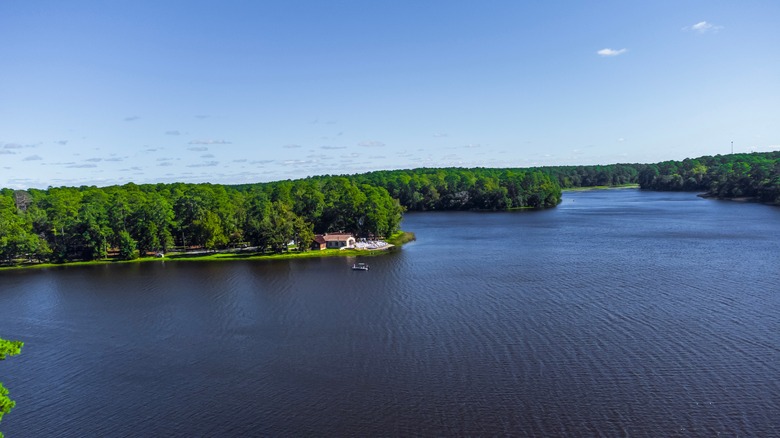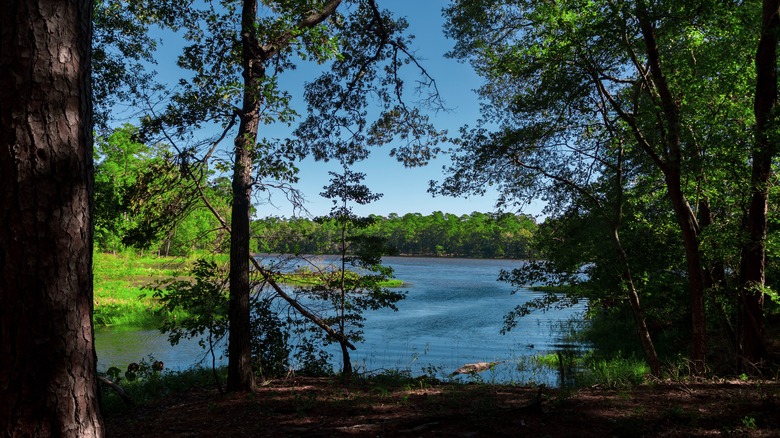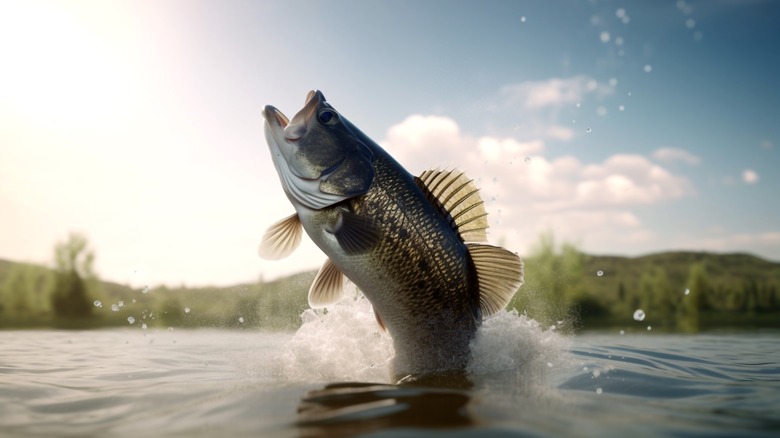Camp, Hike, And Relax In A National Forest's Edge At This Underrated Texas State Park
Texas is a massive state with an array of impressive natural attractions, like this mesmerizing geographic wonder near San Antonio. While many people associate the Lone Star State with tumbleweeds, open rangeland, and rugged desert canyons, its eastern side has a much different feel. This region is home to vast pine forests, wetlands, and loads of lakes, giving it a much cosier, woodsy feel than the endless plains and big sky found out west.
Situated just one hour north of Houston on the edge of the Sam Houston National Forest is Huntsville State Park, a scenic reserve that possesses the deep-woods goodness East Texas is known for. This scenic, 2,000-acre park surrounds Lake Raven and draws visitors from the region and beyond for its hiking, biking, camping, picnicking, fishing, and other outdoor pursuits
Huntsville Park is also a terrific destination for wildlife devotees. You can spot a host of critters in the water and on land, as well as in the trees and in the air, as the park is home to an array of avian creatures, making it a magnet for birders keen to check another species off their lists.
Kick back on the lakeshore under a blanket of pines
The Pineywoods is a forested region of pine trees and hardwoods that spreads into Oklahoma, Louisiana, Arkansas, and the part of east Texas that Huntsville Park calls home. The park's thick stands of trees make it perfect for camping, with 160 sites to choose from, as well as screened shelters (the mosquitoes can get thick) and group pavilions available for rent.
The park is a haven for hiking, featuring over 21 miles of trails suitable for novices and experts alike, and these paths are also great places to catch a glimpse of the wildlife native to the area. If you're lucky, you may just catch a glimpse of white-tailed deer, skunks, opossums, squirrels, and American alligators either in or near the water. There are also plenty of venomous snakes such as copperheads, rattlesnakes, and cottonmouths (water moccasins) in the area, so to try to stick to the trails, and take care when stepping over logs and rocks or traversing through underbrush, especially near creeks and lakeshore.
When it comes to wildlife, birds are arguably the star of the show at Huntsville State Park, with over 250 species recorded. The woods come alive during the spring migration, and songbirds fill the forest with their whistles and calls during the summer months. The park also features a bird watching blind that looks over Lake Raven, where it's possible to spy woodpeckers, varieties of waterfowl, and even large raptors such as bald eagles.
Take a swim or cast a line in a deep forest lake
At the heart of Huntsville State Park is Lake Raven, a 210-acre body of water fed by three streams: Prairie Branch, Big Chinquapin Creek, and Little Chinquapin Creek. It's popular in the warm months for its swimming area (though keep on the lookout for alligators), and kayaks are also available for rent.
The lake also draws anglers hoping to hook into a fat fish. The waters are home to crappie, perch, catfish, and largemouth bass, some of which can grow in excess of 10 pounds. Fishermen can put in at the park's boat ramp or cast off the fishing pier. Motorized boats are also allowed on the water, but they must keep to idle speed.
While you're in the area, head further into the Sam Houston National Forest, a 163,000-acre expanse of deep pines, wetlands, streams, and epic trekking paths such as the 129-mile-long Lone Star Hiking Trail. You can also hit the nearby town of Huntsville, a lively college burg that's home to Sam Houston State University, as well as a museum honoring the Texan founding father the university is named for. For more of Texas' outdoor bliss, check out this pristine, unsung, island state park.


